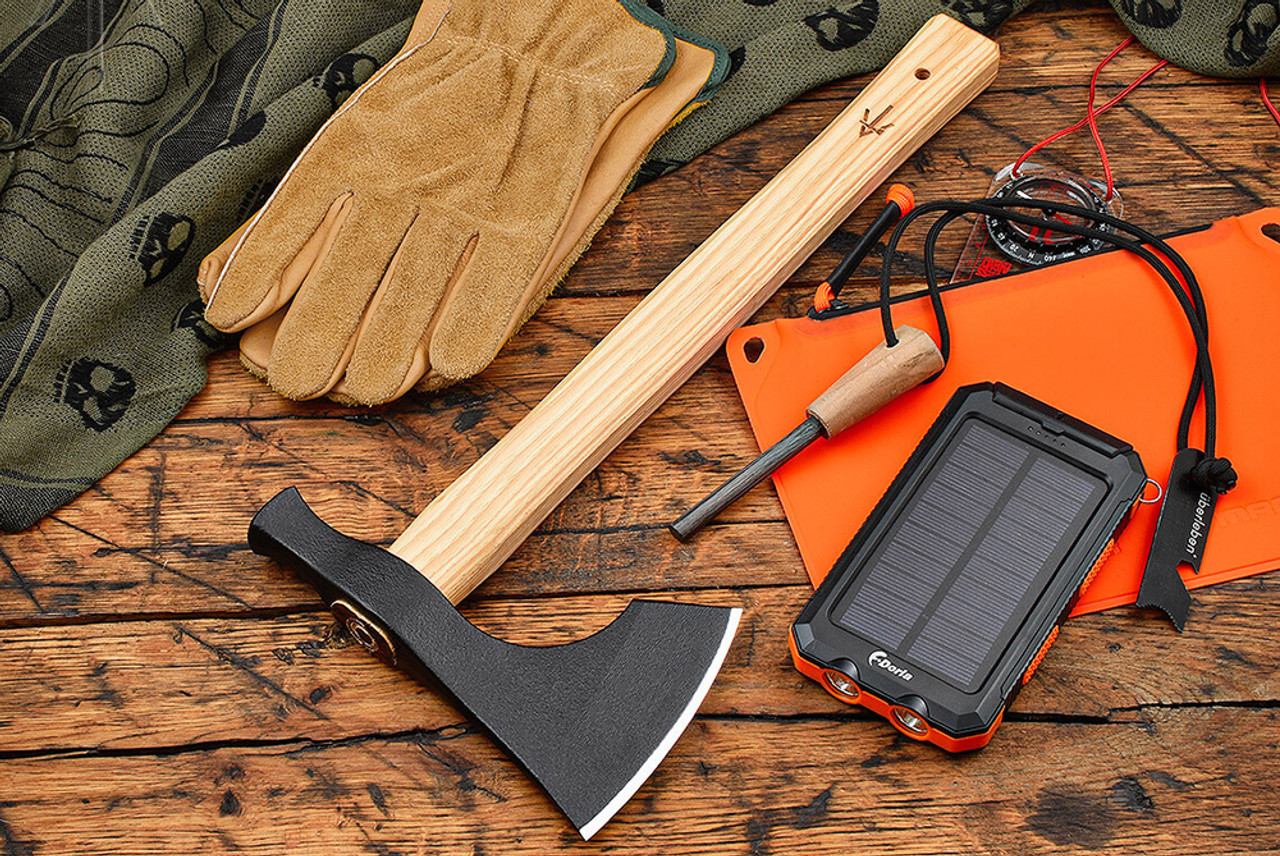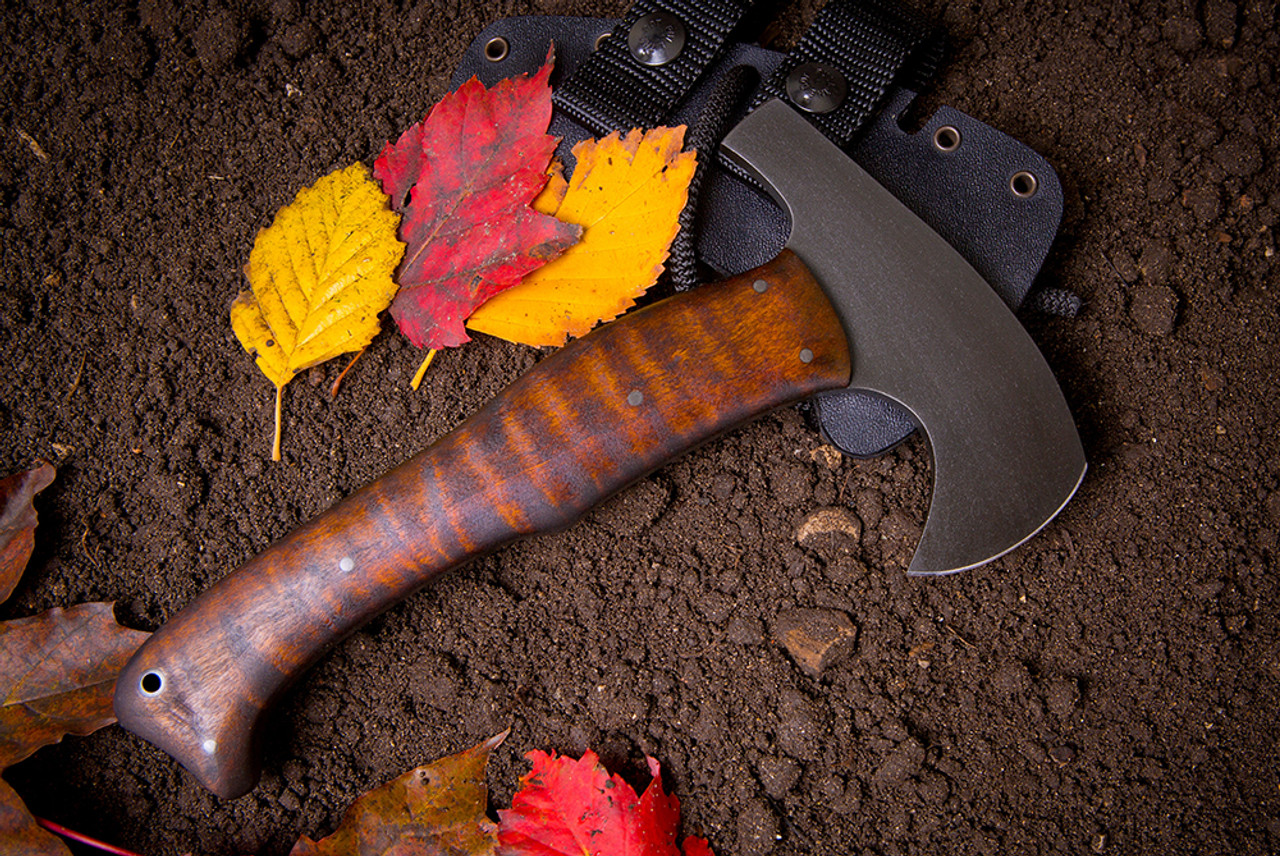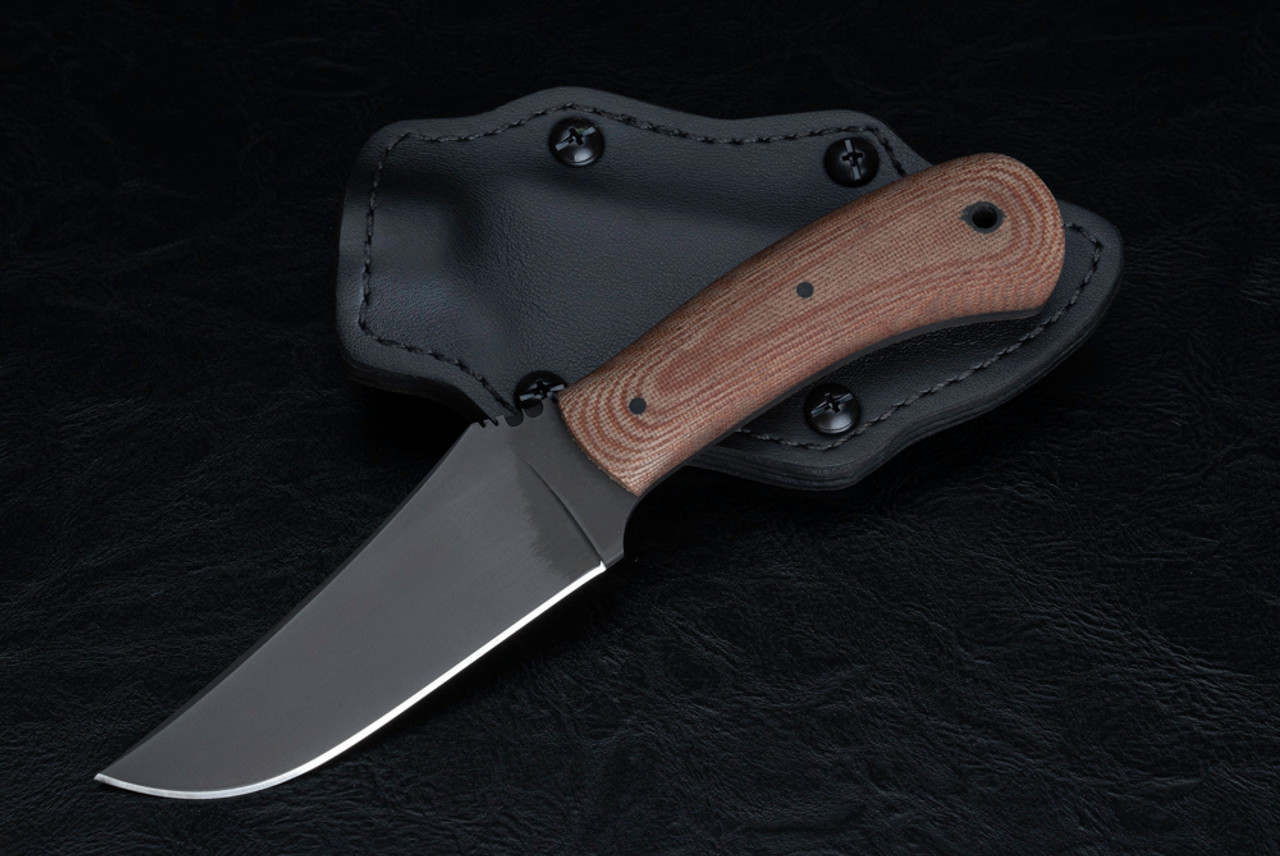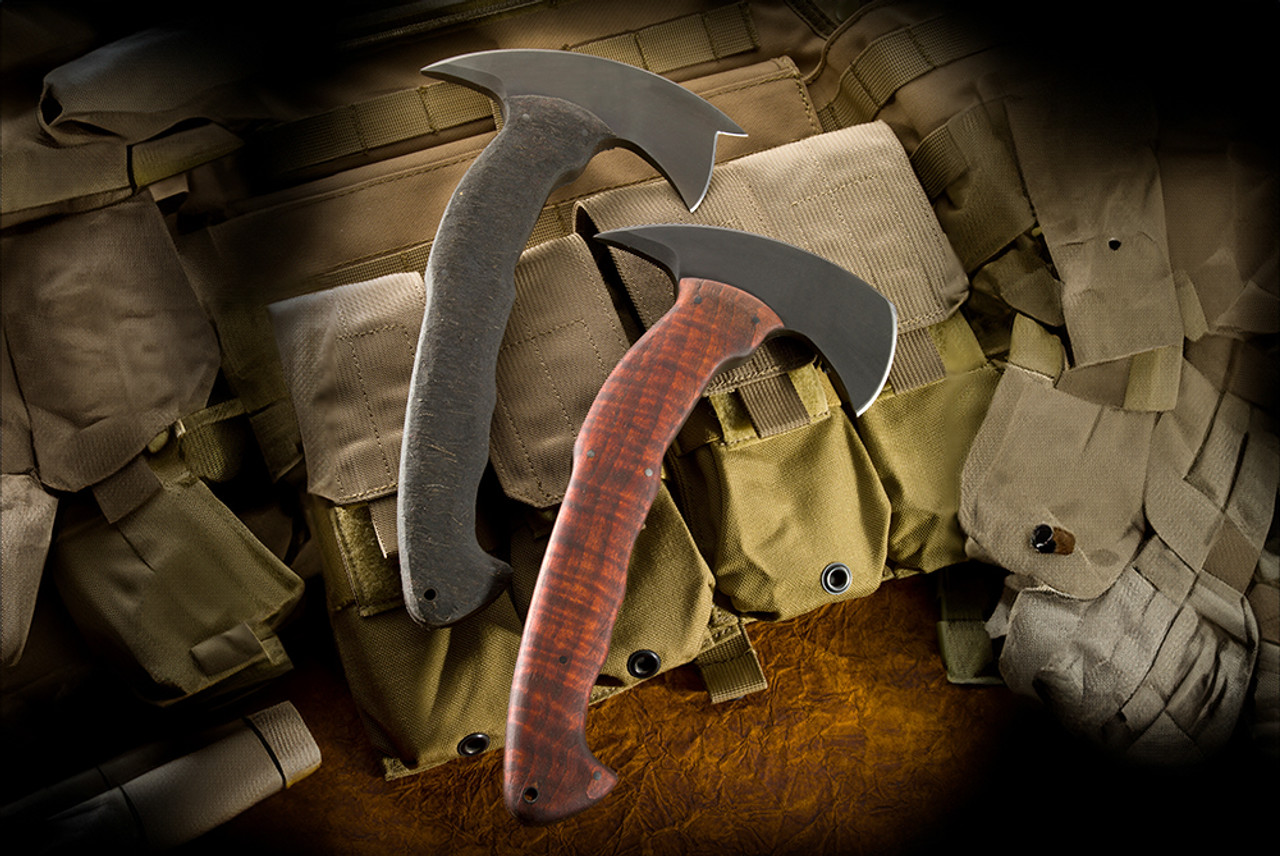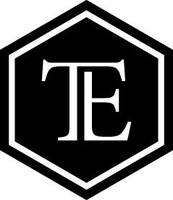In Sanjo City (famous in Japan for its metal-working), Mizuno Industries was founded in 1937 by Yoshio Mizuno, originally making replacement blades for wood planes. At the time, axes were popular tools for farming and forestry, as well as for chopping logs for fires to heat water for bathing. Still in industrial use today, their use now also includes chopping logs for wood stoves, campfires and other outdoor activities. At Mizuno, we make a variety of axes and other tools, both traditionally-shaped and modern-styled. You’re sure to find one to exactly suit your needs, from daily tasks such as chopping logs, to special projects requiring high-quality pliers for working with sheet metal.
Craftsmanship:
Our tools are each carefully handmade by experienced craftsmen.
Mass-production just can’t create the quality tools we offer to a wide range of satisfied users: the perfect cutting edge on our axes; the comfortable feel in the hand of every Mizuno tool.
Quality:Each part of each item is crafted with care by our experienced professionals, from the steel axe heads, to the wooden handles and even the blade covers.
In making our axe handles, for example, we use only the finest oak from northern Japan, naturally hardened over years of hot summers and cold winters, creating a fine-grained wood with lifetime durability.
The grooves on the axe head:As part of our traditional axe-crafting process, we carve 3 grooves into the left side, and 4 grooves into the right side.
These grooves symbolize the presence of the Shinto gods in nature, and invoke their protection when the axe is used to do potentially dangerous work.
Steel:The laminated steel axe head is constructed using three layers of steel, following the Warikomi technique. The core of the cutting edge is made from 0.45% carbon steel, while the surrounding steel is significantly softer. This design provides a hard, durable cutting edge, with softer steel around it to absorb impact.
The Craft axe is specifically designed for precision carpentry tasks and splitting smaller wood, rather than for heavy blows on large logs. It is perfectly suited for outdoor activities like camping, as well as detailed carpentry work.
A male god who was ordered by Tenjin to manage our country's land for the first time with Izanami no Mikoto, gave birth to the gods and divided mountains, seas, plants and trees.
The father deity of Amaterasu Emperor Okami and Susano no Mikoto.
B. Izanami no Mikoto
The spouse goddess of Izanaki no Mikoto.
C. Amaterasu Okami (Amaterasu Onokami)
The daughter of Izanaki no Mikoto, the main deity of Takamanohara.
D. Sarutahiko Okami (Sarutahiko no Okami)
When one of the gods of the country, Ninigi no Mikoto descended, he made the gods afraid of the gods by similar to the evil eye of the sky, but he was controlled by the Ame no Uzume no Mikoto, stood at the head of the Tenson, and was enshrined on the Isuzu River in Goise Province. It is said that he is very tall and more than seven feet tall.
And. Toyoke no Okami (Toyoke no Okami)
The grandson of Inono.
The child of Wakumusubi no Kami. A god who is in skin s of grain.
F. Kasuga no Okami (Kasuga no Okami)
Kasuga Gongen: The enshrined deity of Kasuga Shrine. The Ujigami of the Fujiwara clan.
The guardian of Kofuku-ji Temple.
G. Hachiman no Okami (Hachiman no Okami)
Hachimanjin (Hachimanjin). The enshrined deity of Hachimangu Shrine.
Emperor Ojin is the main seat and the god of bows and arrows.
About traditional craftsmen:
Craftsmanship:
Our tools are each carefully handmade by experienced craftsmen.
Mass-production just can’t create the quality tools we offer to a wide range of satisfied users: the perfect cutting edge on our axes; the comfortable feel in the hand of every Mizuno tool.
Quality:Each part of each item is crafted with care by our experienced professionals, from the steel axe heads, to the wooden handles and even the blade covers.
In making our axe handles, for example, we use only the finest oak from northern Japan, naturally hardened over years of hot summers and cold winters, creating a fine-grained wood with lifetime durability.
The grooves on the axe head:As part of our traditional axe-crafting process, we carve 3 grooves into the left side, and 4 grooves into the right side.
These grooves symbolize the presence of the Shinto gods in nature, and invoke their protection when the axe is used to do potentially dangerous work.
Steel:The laminated steel axe head is constructed using three layers of steel, following the Warikomi technique. The core of the cutting edge is made from 0.45% carbon steel, while the surrounding steel is significantly softer. This design provides a hard, durable cutting edge, with softer steel around it to absorb impact.
The Craft axe is specifically designed for precision carpentry tasks and splitting smaller wood, rather than for heavy blows on large logs. It is perfectly suited for outdoor activities like camping, as well as detailed carpentry work.
Specifications:
- Model: Craft Axe - 010-161
- Overall Length: 9.65″
- Head Length: 4.92"
- Blade Length: 3.15"
- Blade Steel: Carbon Steel w/ Core
- Handle Material: Japanese White Oak (Treated w/ a colourless varnish for easier removal of surface dirt)
- Handle Color: Smoked Wood
- Sheath: Leather
- Head Weight: 14.81 Ounces
- Total Weight: 25.50 Ounces
- Country of Origin: Japan
Explanation of the axe groove: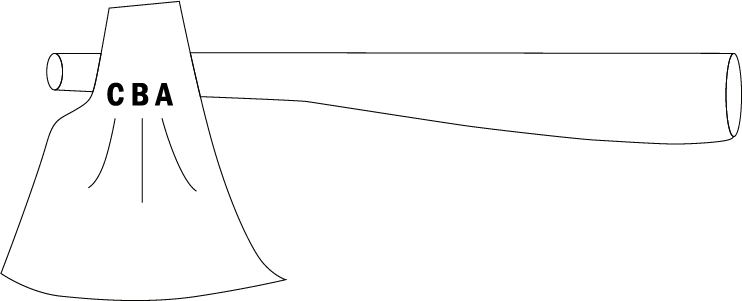
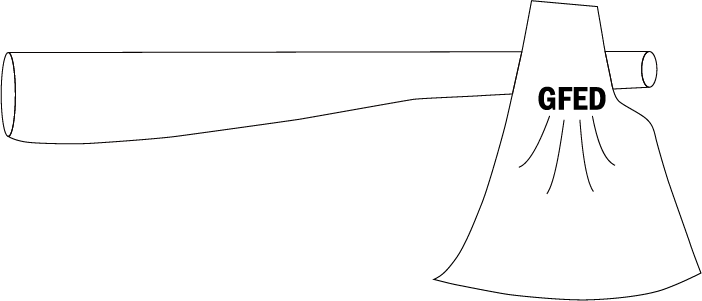
A male god who was ordered by Tenjin to manage our country's land for the first time with Izanami no Mikoto, gave birth to the gods and divided mountains, seas, plants and trees.
The father deity of Amaterasu Emperor Okami and Susano no Mikoto.
B. Izanami no Mikoto
The spouse goddess of Izanaki no Mikoto.
C. Amaterasu Okami (Amaterasu Onokami)
The daughter of Izanaki no Mikoto, the main deity of Takamanohara.
D. Sarutahiko Okami (Sarutahiko no Okami)
When one of the gods of the country, Ninigi no Mikoto descended, he made the gods afraid of the gods by similar to the evil eye of the sky, but he was controlled by the Ame no Uzume no Mikoto, stood at the head of the Tenson, and was enshrined on the Isuzu River in Goise Province. It is said that he is very tall and more than seven feet tall.
And. Toyoke no Okami (Toyoke no Okami)
The grandson of Inono.
The child of Wakumusubi no Kami. A god who is in skin s of grain.
F. Kasuga no Okami (Kasuga no Okami)
Kasuga Gongen: The enshrined deity of Kasuga Shrine. The Ujigami of the Fujiwara clan.
The guardian of Kofuku-ji Temple.
G. Hachiman no Okami (Hachiman no Okami)
Hachimanjin (Hachimanjin). The enshrined deity of Hachimangu Shrine.
Emperor Ojin is the main seat and the god of bows and arrows.
About traditional craftsmen:
 |
| It is a national qualification based on the provisions of the Traditional Law, which was born in 1974 (Showa 49), and strives to preserve traditional crafts, technologies, and techniques unique to the production area, and is responsible for passing on the skills to future generations. |





